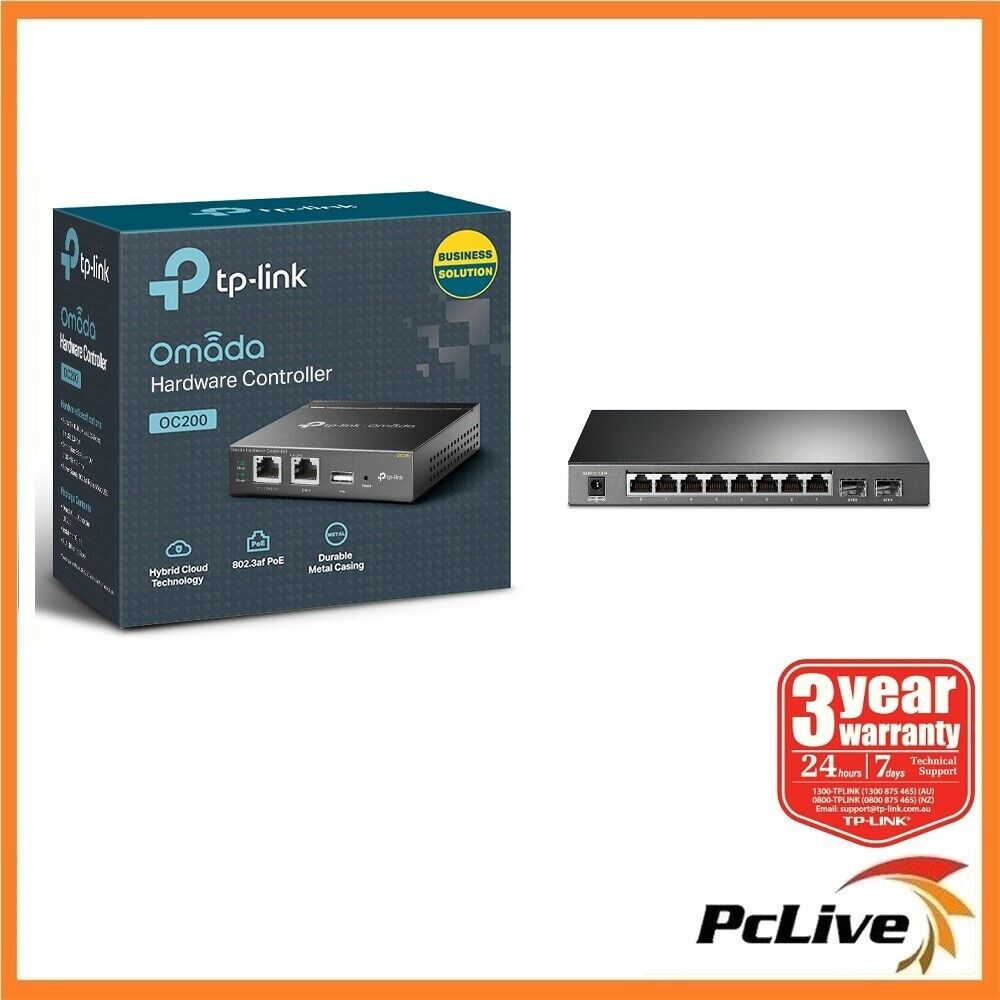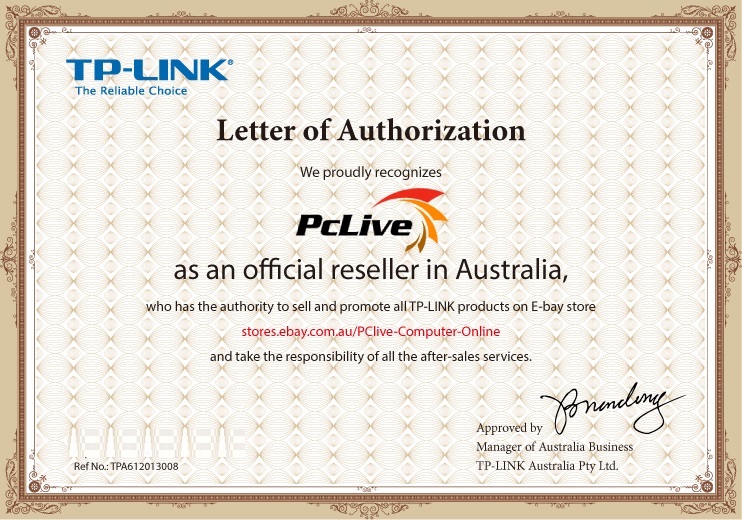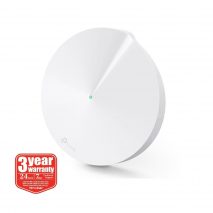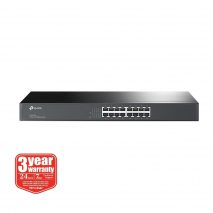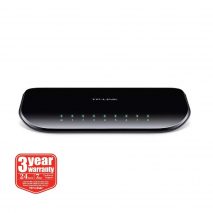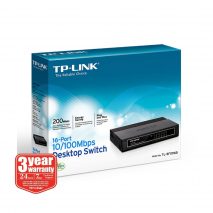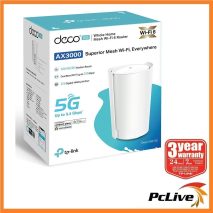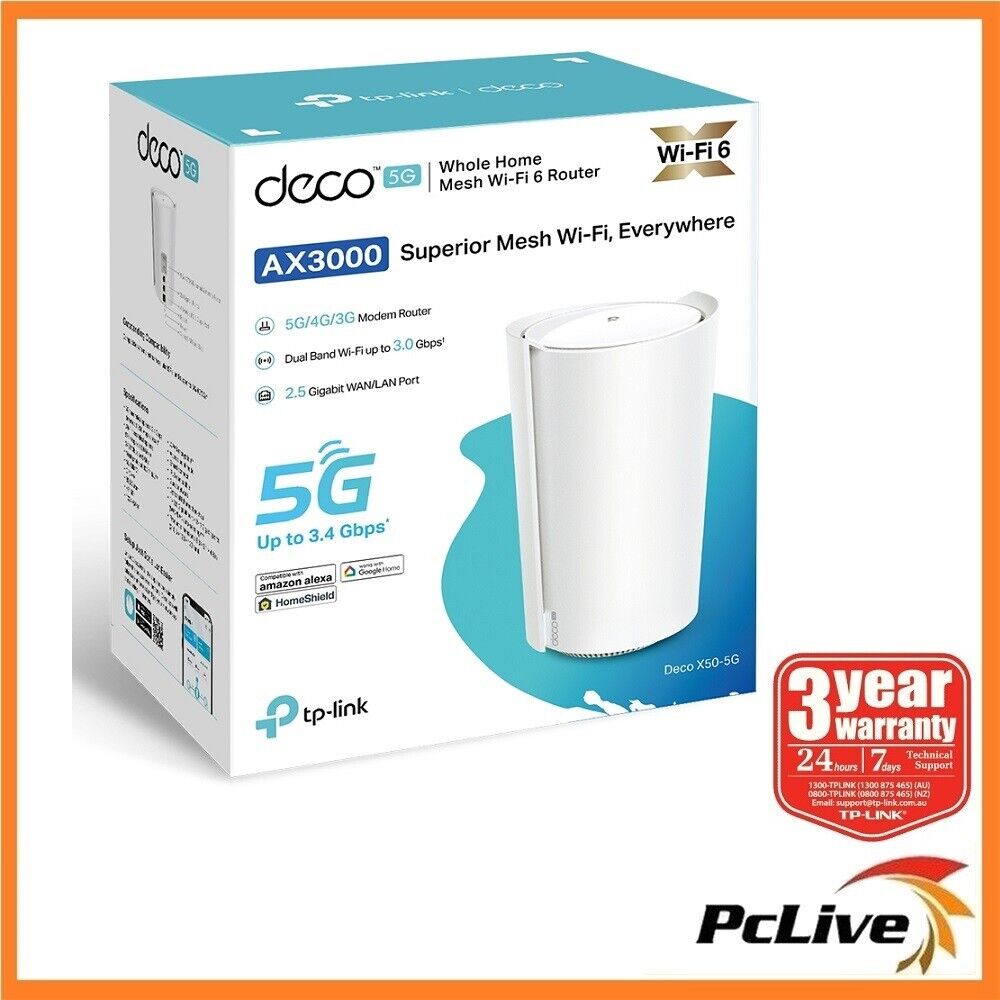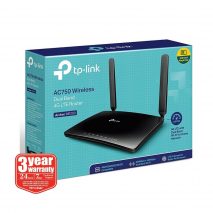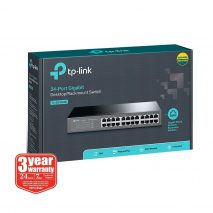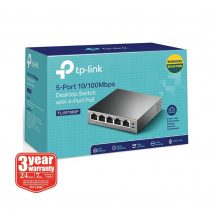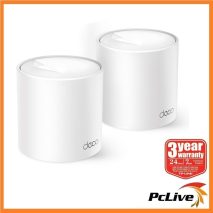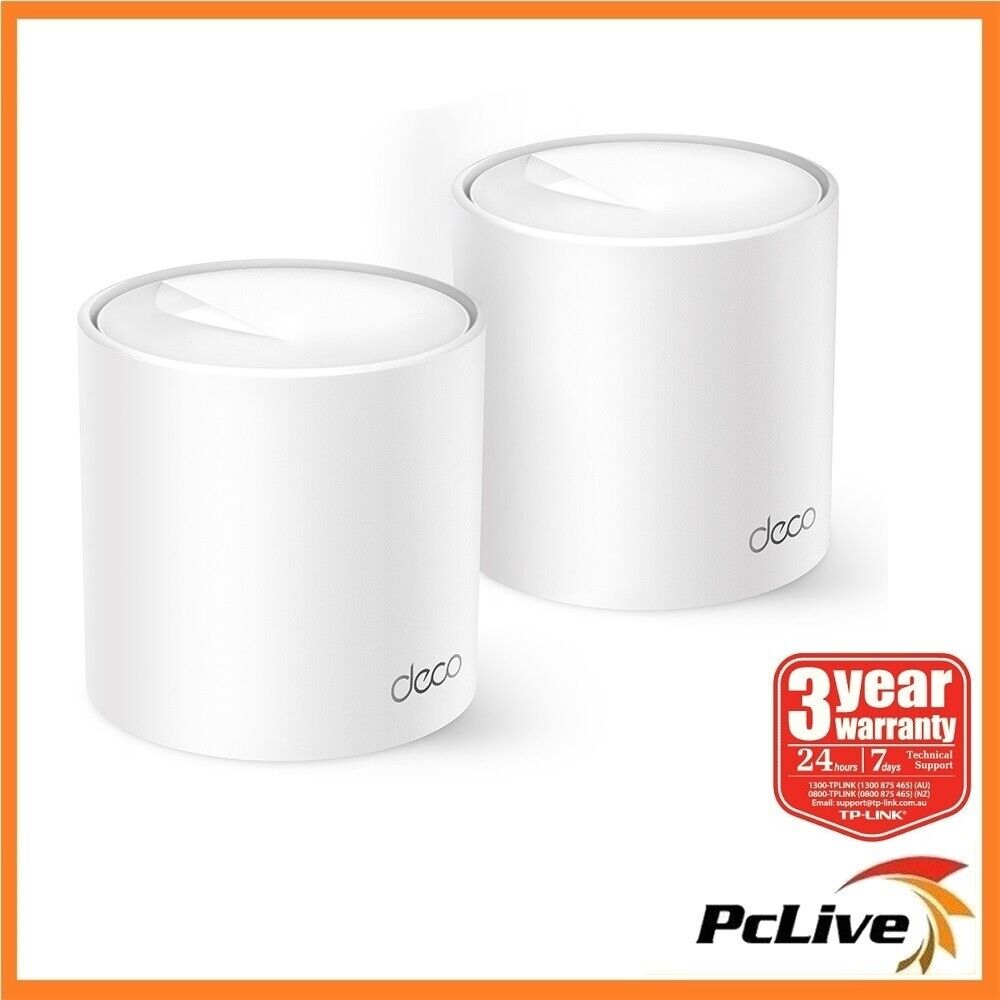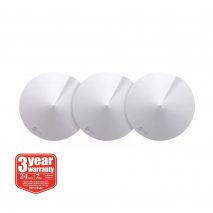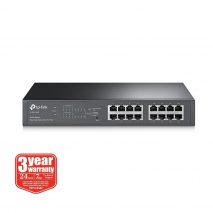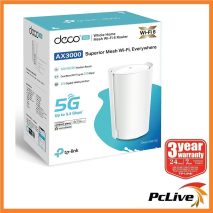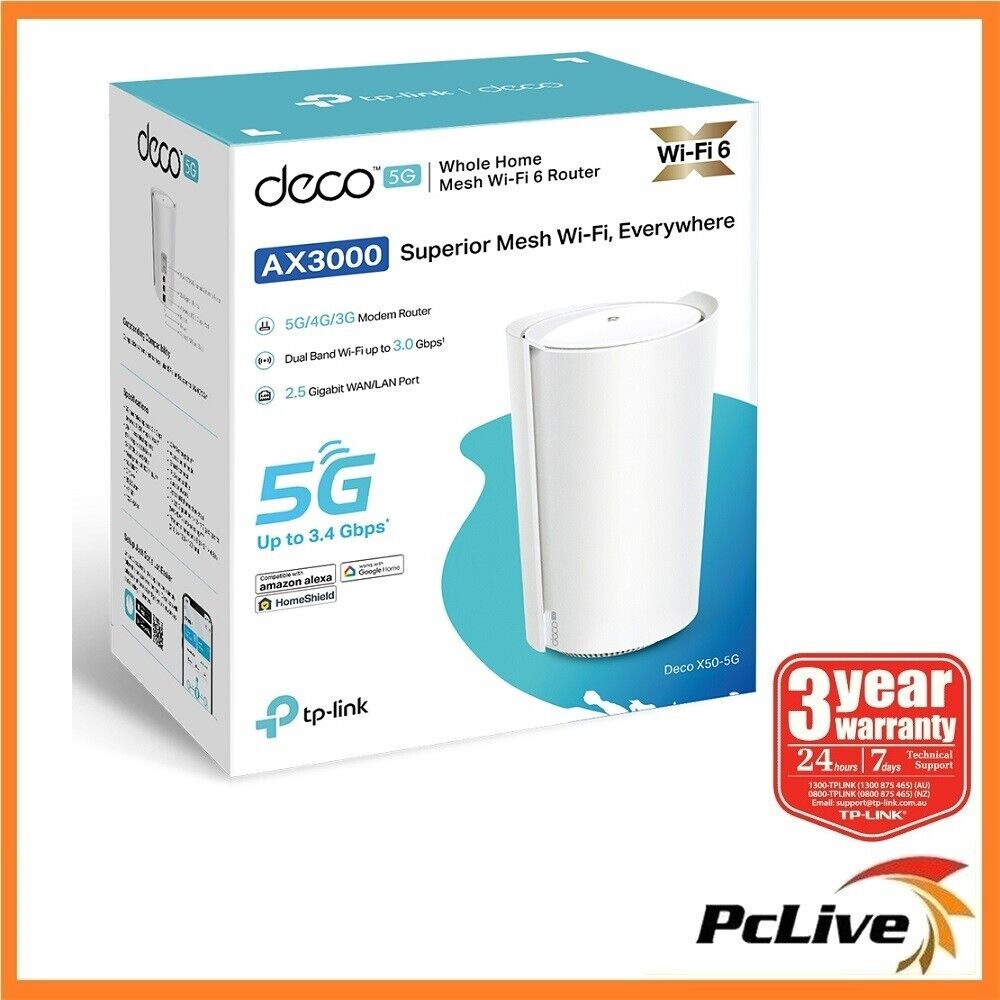Description

- Features 8 PoE+ ports, with a total PoE power budget of 61W* and useful PoE power management features
- Gigabit Ethernet connections on all ports provide full speed of data transferring
- Integrated security strategy including 802.1Q VLAN, ACL, Port Security and Storm control help protect LAN area investment
- L2/L3/L4 QoS and IGMP snooping optimise voice and video applications
- WEB/CLI managed modes, SNMP, and RMON bring abundant management features
- Innovative energy-efficient technology saves up to 50% of power consumption
What This Product Does
TP-LINK Gigabit Smart Switch TL-SG2210P is equipped with 8 gigabits RJ45 ports and 2 SFP slots, all RJ45 Ports support IEEE 802.3af/at with a total PoE power budget of 61W* and useful PoE power management features. The switch provides high performance, enterprise-level QoS, useful security strategies and rich layer 2 management features.
TP-LINK’s Gigabit Smart Switch TL-SG2210P is specially designed for the small and medium business networks that require efficient network management. TL-SG2210P comes with a comprehensive set of features, such as Link Aggregation Group, 802.1Q VLAN, Access Control Lists (ACL), Quality of Service(QoS L2 to L4), Storm Control and IGMP Snooping to provide a small or medium-sized business with a network that is geared for growth while ensuring performance and reliability. What’s more, its easy-to-use web management interface means faster setup and configuration with less downtime, providing the ideal solution for your business network.
IEEE 802.3af/at-compliant Power over Ethernet
The TL-SG2210P supports 8 ports of IEEE 802.3af/at-compliant PoE and has a total power supply of 61W* to power any 802.3af/at compliant power device. It’s an efficient and cost-effective choice to work with wireless access points, surveillance cameras, IP phones, and other PoE-powered devices while getting rid of cables or power lines running around. Compact and flexible, the TL-SG2210P is ideal for flexibly use PoE to deploy wireless access points or IP-based network surveillance cameras for projects or small business networks.
The TL-SG2210P supports 8 ports of IEEE 802.3af/at-compliant PoE and has a total power supply of 61W* to power any 802.3af/at compliant power device. It’s an efficient and cost-effective choice to work with wireless access points, surveillance cameras, IP phones, and other PoE-powered devices while getting rid of cables or power lines running around. Compact and flexible, the TL-SG2210P is ideal for flexibly use PoE to deploy wireless access points or IP-based network surveillance cameras for projects or small business networks.
Advanced QoS Features
To integrate voice, data and video service on one network, the switch applies rich QoS policies. The administrator can designate the priority of the traffic based on a variety of means including Port Priority, 802.1P Priority, and DSCP Priority, to ensure that voice and video are always clear, smooth and jitter-free. In conjunction with the Voice VLAN the switch supports, the voice applications will operate with much smoother performance.
To integrate voice, data and video service on one network, the switch applies rich QoS policies. The administrator can designate the priority of the traffic based on a variety of means including Port Priority, 802.1P Priority, and DSCP Priority, to ensure that voice and video are always clear, smooth and jitter-free. In conjunction with the Voice VLAN the switch supports, the voice applications will operate with much smoother performance.
Abundant Layer 2 Features
For more applications of layer 2 switches, TL-SG2210P supports a complete lineup of layer 2 features, including 802.1Q tag VLAN, Port Isolation, Port Mirroring, STP/RSTP/MSTP, Link Aggregation Control Protocol and 802.3x Flow Control function. Any more, the switches provide advanced features for network maintenance such as Loop Back Detection, Cable Diagnostics, and IGMP Snooping. IGMP Snooping ensures the switch intelligently forward the multicast stream only to the appropriate subscribers while IGMP throttling & filtering restricts each subscriber on a port level to prevent unauthorized multicast access.
For more applications of layer 2 switches, TL-SG2210P supports a complete lineup of layer 2 features, including 802.1Q tag VLAN, Port Isolation, Port Mirroring, STP/RSTP/MSTP, Link Aggregation Control Protocol and 802.3x Flow Control function. Any more, the switches provide advanced features for network maintenance such as Loop Back Detection, Cable Diagnostics, and IGMP Snooping. IGMP Snooping ensures the switch intelligently forward the multicast stream only to the appropriate subscribers while IGMP throttling & filtering restricts each subscriber on a port level to prevent unauthorized multicast access.
Enterprise Level Management Features
TL-SG2210P is easy to use and manage. It supports various user-friendly standard management features, such as intuitive web-based Graphical User Interface(GUI) or industry-standard Command Line Interface(CLI). SNMP (v1/2/3) and RMON support enable the switch to be polled for valuable status information and send traps on abnormal events.
*PoE budget calculations are based on laboratory testing. The actual PoE power budget is not guaranteed and will vary as a result of client limitations and environmental factors.
TL-SG2210P is easy to use and manage. It supports various user-friendly standard management features, such as intuitive web-based Graphical User Interface(GUI) or industry-standard Command Line Interface(CLI). SNMP (v1/2/3) and RMON support enable the switch to be polled for valuable status information and send traps on abnormal events.
*PoE budget calculations are based on laboratory testing. The actual PoE power budget is not guaranteed and will vary as a result of client limitations and environmental factors.
Specifications
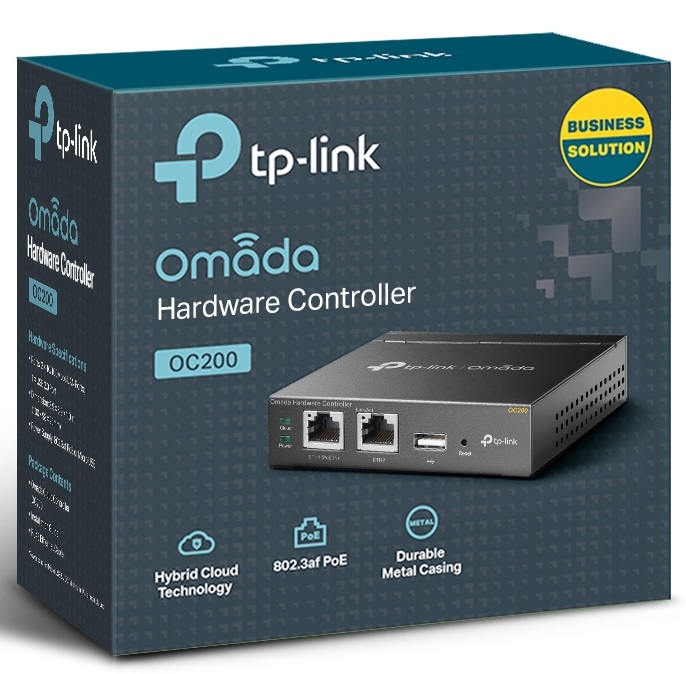
- Centralised Management: Up to 100 Omada access points, 20 JetStream switches, and 10 Omada routers.
- Free Cloud Access: Manage and monitor with the Omada app or Web UI from anywhere, anytime.
- On-Premises Management: Locally monitor and manage devices with the ultimate security and stability.
- Industry-Leading Hardware Design: A powerful chipset, durable metal casing, USB 2.0 port for auto backup, and two Fast Ethernet ports.
- Flexible Power Supply: 802.3af/at PoE or Micro USB (DC 5V/Minimum 1A) for flexible installation.
- Easy and Intelligent Network Monitoring: The easy-to-use dashboard makes it simple to see the real-time network status and traffic distribution.
- Real-Time Network Topology: Helps IT admins quickly see and troubleshoot connections at a glance.
- Easier Network Maintenance: WiFi heatmap simulator, visualisable network report, and batch & multi-site management benefit network maintenance.

|
|

